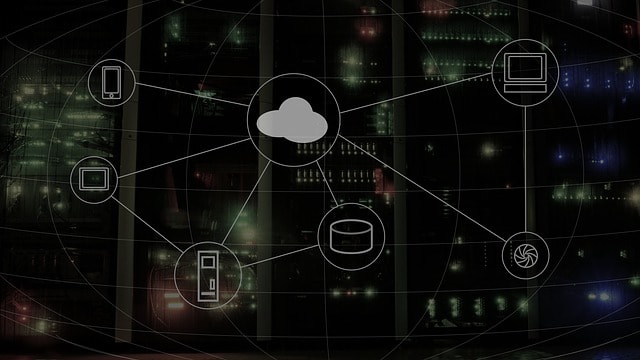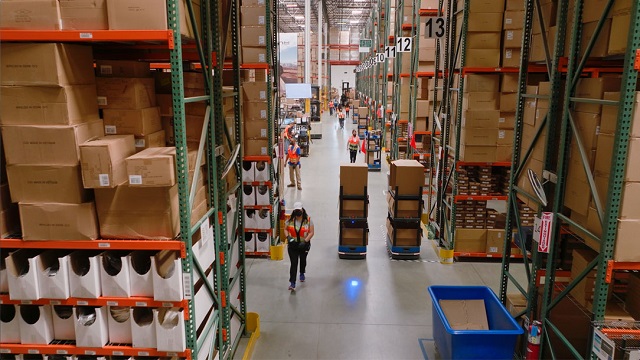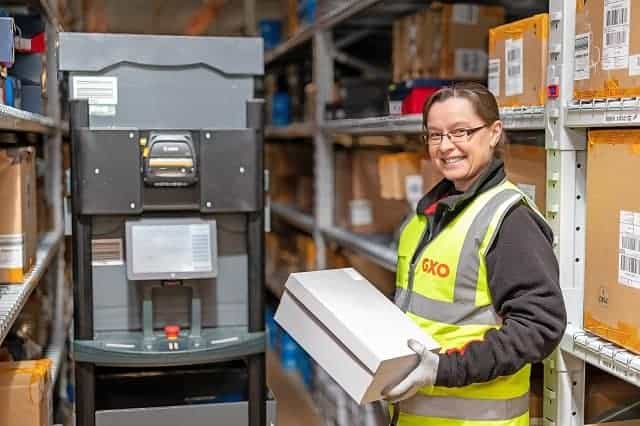Technology can have a significant impact on supply chains, but supply chain digitization still lags behind digitization of other areas of business across many industries. According to research from McKinsey & Company, the supply chain dimension has the lowest level of digitization (43%) compared to other dimensions, including products and services, marketing and distribution channels, business processes, and new entrants at the ecosystem level. Still, there are several technologies that are transforming supply chains for the organizations that adopt them.
Technology advancements and adoption are driven by better data availability and a push for better visibility, efficiency and accuracy. The right technology solutions allow supply chain operations to make data-driven decisions and provide a competitive advantage, particularly if an organization’s competitors are slow to adopt the latest technology advancements.
Let’s take a look at the technologies that are making the biggest impact on supply chains around the world:
- Cloud technology and cloud-based commerce networks
- Internet of Things
- Artificial Intelligence & Machine Learning
- Advanced and predictive analytics
- Digital supply chain twins
- Weighing and shipping technologies
- Robotics, driverless vehicles and drones
- 3D printing
- Blockchain
- Additional resources on supply chain technologies
Cloud technology and cloud-based commerce networks

The biggest benefit of cloud technology and cloud-based commerce networks is that they allow organizations to leverage large pools of IT resources without the need to build and maintain data center infrastructure. In the cloud, companies can deploy resources on an as-needed basis, rather than invest in additional servers and storage capacity that they may only need for a short time.
Cloud technology allows organizations to combine all supply chain and logistics information into a single, central solution. Centralized information eliminates data silos and strengthens information sharing through real-time communication (instead of point-to-point data transmission). All entities throughout the supply chain – such as vendors, suppliers, partners, and end consumers – can access relevant, accurate and up-to-date information.
Internet of Things

The Internet of Things (IoT), comprised of physical devices equipped with remote sensors that capture and transmit large amounts of data, is already making a big impact in the supply chain industry. IoT supports operational efficiencies in areas such as asset tracking, inventory management and forecasting, improving productivity and aiding decision-making across the supply chain.
For example, companies can track products throughout the entire lifecycle with RFID and GPS sensors. Manufacturers can gather valuable granular data such as the time an item spent in storage, at what temperature, how long it took to sell, the length of time between purchase and fulfillment and how long it spent in transport. IoT sensors provide real-time visibility into inventory levels, making it possible to identify sales trends and make more accurate projections to plan for future manufacturing or replenishment. Fulfillment operations can use data from IoT trackers to better pinpoint the key indicators that lead to better reliability and efficiency in their services.
Should supply chain delays occur, companies can more easily identify the source of bottlenecks and take action to improve processes. Thanks to the ability to track the location of items in real-time during shipping, companies can deliver excellent customer service by providing customers with accurate delivery estimates and real-time location information.
Artificial Intelligence & Machine Learning

A variety of other technologies, such as robots and advanced warehouse management systems, leverage Artificial Intelligence (AI) and Machine Learning (ML) for data-driven decision-making. According to PricewaterhouseCoopers, AI’s potential contribution to the global economy by 2030 is $15.7 trillion. Thanks to AI, companies can automate functions such as demand forecasting, capacity and production planning and predictive maintenance.
For example, AI-driven technologies can analyze weather, real-time sales data and other factors to generate accurate demand forecasts and facilitate logistics plans. DHL developed a tool based on machine learning that analyzes 58 parameters of technical data to predict air transit time delays up to a week in advance. The tool also identifies the top factors impacting shipment delays, such as departure day and the on-time performance of an airline.
DHL’s Resilience360 Supply Watch module, part of its cloud-based risk management solution, Resilience360, uses advanced Machine Learning and Natural Language Processing (NLP) to analyze the content and context of 8 million online and social media posts from more than 300,000 sources. By analyzing sentiment from unstructured data from these online conversations, the system identifies risk factors, allowing supply chain managers to take proactive, corrective action to avoid supply chain disruptions.
Robotics enabled with AI and ML augment the work of humans in warehouses and distribution centers. For instance, Chuck by 6 River Systems is a collaborative robot that leverages AI and ML to prioritize work and optimize picking routes in real-time. Collaborative robots like Chuck are programmed to guide users through specific tasks, and they also have built-in quality control measures like barcode readers to help reduce human errors and improve accuracy. Chuck integrates with warehouse management systems (WMS), as well, so it can be used for a variety of warehouse activities such as picking, put-away, counting, replenishment and sorting. Mobile Sort, another solution by 6 River Systems, uses ML to help associates intelligently pick and sort batches into discrete orders. Using images, lights and sensors, Mobile Sort directs associates and validates tasks for better efficiency and accuracy. We’ll discuss robotics solutions in more detail later in this guide.
Advanced and predictive analytics

Advanced and predictive analytics are deployed in real- or near-real time. Use cases include dynamic pricing, product quality testing, dynamic replenishment and staffing and resource decisions. Advanced and predictive analytics solutions extrapolate data from IoT, weather patterns and dynamic sales data to help supply chain managers understand future scenarios and make more profitable decisions.
Predictive analytics may sound similar to Machine Learning, but it’s actually an application of ML, EDUCBA explains. ML is an AI technique consisting of complex algorithms and models that can be used for prediction. In Machine Learning, algorithms process the data provided without a pre-determined set of rules and regulations. These systems get better with experience, after processing large quantities of data, without the need for explicit programming.
Predictive modeling, or predictive analytics, on the other hand, is a form of analytics that evaluates a set of historical and current data to identify patterns and behaviors, predict the most likely outcomes and estimate the probability of different outcomes based on the data.
According to Supply Chain Dive, based on its analysis of the 2019 MHI Annual Industry Report, 30% of supply chain professionals surveyed say they’re currently using predictive analytics at their company. That’s an increase from 17% in 2017. Nine out of 10 respondents say they believe predictive analytics will impact the supply chain in the next decade. Just 7% say they’re not likely to adopt predictive analytics, a decrease from 11% in 2017. More than half (57%) of those not currently using predictive analytics say they have plans to do so within the next five years.
Predictive analytics has many use cases in the supply chain. Here are just a few examples:
- Predictive maintenance: In manufacturing, predictive analytics supports predictive maintenance. Coupled with IoT, parts and sensors transmit data regarding a part’s or equipment asset’s performance. When data indicates that a part shows signs of failure, manufacturers can ensure that replacement parts are in-stock and plan for repairs to avoid unexpected downtime that may otherwise cause far-reaching supply chain disruption.
- Route optimization: Logistics managers leverage predictive analytics to determine the shortest and fastest route to a destination considering factors such as weather conditions, traffic delays and vehicle data such as mileage. By using predictive models to determine the best route with the least risk, logistics companies help to ensure on-time deliveries.
- Demand forecasting: Predictive analytics can help warehouses and distribution centers optimize inventory, ensuring that there’s enough stock on-hand to meet anticipated demand. Companies can more easily prepare for seasonal fluctuations to avoid stock-outs and lost sales opportunities. By identifying behavior patterns that indicate a shift in consumer habits, companies can even predict upcoming trends and prepare for unexpected demand shifts.
- Inventory optimization: Coupled with demand forecasting, predictive analytics enables warehouses and DCs to optimize inventory levels. Predictive analytics helps determine the inventory quantity and safety stock levels needed to meet demand without incurring additional long-term storage costs for excess inventory.
- Procurement: Partnering with cost-effective and reliable vendors is vital for keeping a business running smoothly. By using predictive analytics to evaluate vendors on factors such as reliability, cost and quality, companies can make data-driven procurement decisions and implement contingency plans (such as back-up suppliers) to mitigate risk.
Digital supply chain twins

A digital supply chain twin as a digital model of a real-world entity or system. It represents all relationships between every entity in the real-world supply chain from end-to-end, including customers, warehouses and distribution centers, manufacturers, logistics providers, markets, weather and more. Combining the ideas of IoT and modeling, it uses sensors to gather data which feeds the digital supply chain replica.
“Although digital twins vary greatly in their purposes and the amount of data they hold, all follow the same principle,” explains Gartner. “There is exactly one twin per thing. The twin is continuously updated to mirror the current state of the physical thing.” According to a Gartner report on findings from a survey conducted in July and August 2018, 13% of companies implementing IoT projects currently use digital twins, and 62% are establishing the use of digital twins or reported having plans to do so within 12 months.
Digital twins serve as proxies for their real-world counterparts. Programming a twin to encapsulate data allows analysts and supply chain leaders to make changes to the twin without impacting any connected applications, and likewise, changes to connected applications without affecting the twin. Supply chain leaders can apply prescriptive analytics and AI to a digital twin to enhance situational awareness and support better, faster decision-making – either by augmenting human decision-making or automating the decision-making process entirely. Supply chain leaders use digital twins to:
- Analyze potential fluctuations in demand
- Identify bottlenecks in the supply chain
- Test promotions in different markets or regions
- Identify risks and prescribe solutions such as arranging backup suppliers
- Apply predictive maintenance for vehicle fleets to minimize disruptions
- Simulate the most efficient routes to ensure on-time delivery
Unilever, a consumer goods company, created a pilot digital twin of a factory in Brazil in 2018 and now plans to implement digital twins of 170 global plants by the end of 2020. According to the Wall Street Journal, “The technology lets the Anglo-Dutch company make real-time changes to optimize output, use materials more precisely and help limit waste from product that doesn’t meet quality standards.” In the pilot program, focused on a facility that makes products ranging from Dove soap to ice cream, Unilever used the twin to set parameters for various standards, such as the ideal temperature for cutting soap into bars. When the temperature is too high, a machine cools the soap to the optimal temperature.
Instead of pausing production for quality checks, operators track whether the production process is meeting the pre-defined parameters and tests quality offline using the digital twin. If production isn’t meeting those parameters, operators then pause production to implement changes. Unilever saved approximately $2.8 million at the pilot factory by reducing energy consumption and boosting productivity by 1-3%.
Weighing and shipping technologies

As demand for two-day and next-day shipping continues to grow, manufacturers, warehouses and logistics companies all feel the pressure for speed. Mobile weighing technologies are one solution that allows convenient weighing at the point of loading and unloading. These technologies offer an alternative to the traditional static weighing scales located in various areas in the facility. With traditional weighing scales, operators had to transport products from loading and unloading areas to weighing scales using equipment such as forklifts and pallet jacks. Operators recorded information manually and then transported the product back to the loading or unloading area.
While static scales still have a place in the modern warehouse, they create several challenges. First, the need to transport product back and forth between scales and loading and unloading areas means more time and energy spent on the weighing process. The pallet jacks and forklifts used to transport product between locations contributes to traffic congestion and increases safety risks, as well. Forklift operation causes 100 deaths 95,000 injuries each year across all industries, according to OSHA. Plus, OSHA recommends a maximum speed of five miles per hour for forklifts, which can be challenging when time is of the essence. Mobile weighing technologies reduce these risks by reducing the need to transport product to static scales.
Weighing technologies aid the trucking industry, too:
- Weighbridge truck scales: Weighbridge truck scales are placed in areas easily accessible for trucks, and trucks drive onto the scale for weighing. These scales can process many trucks in a short time, and they work for many types of trucks.
- On-board truck scales: Today, more trucks are fitted with on-board truck scales, cordless weighing systems that transmit data using load cell technology and air suspension pressure readings to determine the weight of the truck and the load.
- Portable truck scales: Portable truck scales ensure accurate weighing results and help to ensure that trucks are loaded to optimal capacity and within legal limits. Portable truck scales are easy to move and offer weigh-in-motion capabilities.
In packaging, cartonization solutions calculate the ideal carton size for orders to reduce waste and eliminate guesswork in selecting the right containers for packaging and shipping. If associates select a carton that’s too small or too large, they often end up back-tracking to repeat tasks (selecting a different carton size and repackaging an order). In some cases, associates who select a carton that’s too large use it anyway to avoid repeating tasks, resulting in packaging material waste and potentially higher shipping costs.
The most advanced cartonization software solutions factor in weight as a 4th dimension. These solutions go beyond calculating whether the items in an order will fit in a carton to determine the most cost-effective way to pack an order, considering factors such as carrier dimensional weight rates and labor costs for order picking.
Robotics, driverless vehicles and drones

Robotics, driverless vehicles and drones benefit the manufacturing and warehousing industries in several ways. Collaborative mobile robots, for instance, increase accuracy and efficiency in the warehouse by setting the pace for warehouse associates, leading them through work zones to minimize walking and keeping them on-task. Leveraging AI and ML, collaborative robots like Chuck by 6 River Systems optimize pick routes in real-time and prioritize tasks based on current warehouse conditions.
Collaborative robots work with a warehouse’s existing infrastructure, eliminating costly infrastructure upgrades and lengthy wait times to achieve ROI common with traditional warehouse automation solutions. Equipped with state-of-the-art sensors – the same technology used in autonomous vehicles – Chuck doesn’t need wires, stickers or cables to navigate a warehouse. Chuck is fully aware of its surroundings and navigates around obstacles such as boxes and racks with ease. Chuck also slows down when he detects people or equipment in the area.
A flexible, scalable automation solution for the modern warehouse, warehouse operators can rent additional collaborative robots to meet demand during peak periods and return the additional units when demand returns to normal. Operators can also easily transfer Chucks between facilities as needed.
Collaborative robots transport totes or cartons filled with items throughout the warehouse, meaning associates experience less physical strain and fatigue that’s common with manual material transport. Warehouses that leverage collaborative robots can realize a 2-3X increase in productivity.
Used to streamline inventory management, drones can scan barcodes on pallets and record the location of every item in a warehouse’s WMS, automating the tedious and error-prone process of manual inventory counts. Drones are a safer alternative to manual inventory processes, eliminating the need for reach trucks, scissor lifts and forklifts to access hard-to-reach inventory during inventory counts.
A few major enterprises have explored the use of drones for delivery purposes, such as Amazon’s Prime Air, a project aiming to deliver packages to customers in 30 minutes or less. UPS Flight Forward, a subsidiary of UPS, won federal approval to expand its drone delivery operations in the U.S. in 2019. While drone delivery isn’t yet a fully realized technology, IEEE Spectrum predicts that commercial drone delivery “will finally be a thing in 2020” in the United States, but with intense regulatory scrutiny.
Like unmanned aerial vehicles, several companies have their eye on making driverless vehicles a reality in the near future. These vehicles may be monitored by a driver remotely who has the ability to take control over the vehicle at any time should conditions require human intervention. With this setup, one operator could monitor multiple vehicles simultaneously. Although still in its infancy, the concept of driverless vehicles is in active development by companies like Waymo and Uber. Ultimately, the possibility of driverless trucks in logistics is on the horizon. According to McKinsey & Company, 65% of consumable goods in the U.S. are transported by truck. Fully autonomous trucks could reduce operating costs by approximately 45%, resulting in between $85 billion and $125 billion in savings in the trucking industry.
3D printing

3D printing impacts the supply chain by supporting on-demand manufacturing, which results in inventory cost savings. Because 3D printing relies on digital files or blueprints of a product, developers and companies can implement produce new iterations in less time and at a lower cost. 3D printing allows for sourcing multiple parts from a single source, reducing supplier risk and improving the agility of the product life cycle.
3D Printing Industry reports that, according to research from PricewaterhouseCoopers, 71.1% of manufacturing companies in the U.S. already use 3D printing in some form. Nearly one-third (31.4%) use it for rapid prototyping. 6.6% of manufacturers currently use 3D printing to produce end products, while 42% of manufacturers say they plan to implement 3D printing for mass manufacturing within the next three to five years. What’s more, more than one in five manufacturers (22%) say they believe the restructuring of the supply chain will be the most significant change resulting from widespread adoption of 3D printing.
Blockchain

According to Logistics Bureau, blockchain could resolve much of the friction present in the supply chain today. This friction arises from:
- The multiple entities involved in the supply chain and the need to share information freely (yet securely) with those entities
- The complex contract process requiring banking and legal services
- The complexity of tracing parts and products back to suppliers
- Processing time (sometimes several days) to process payments between entities
A digital, decentralized ledger, blockchain records transactions in a series of blocks. Multiple copies of the blockchain are distributed across several computers, known as nodes, and every node receives an updated copy for every new transaction. The distributed nature of blockchain makes tampering difficult, as hackers or those with malicious intent would need to update all copies of the blockchain at precisely the same moment. Logistics Bureau points out several benefits of blockchain for the supply chain, including:
- Reliability and integrity: All entities agree that the blockchain is a valid record of transactions.
- Provenance: Blockchain makes it easy to trace products and parts to their point of origin.
- Security: It’s impossible to delete transactions from a blockchain. Likewise, it’s not possible to falsify inventory records, payment transactions, delivery times or warehouse conditions in a blockchain ledger.
The blockchain ecosystem isn’t yet fully mature. All partners, suppliers and other entities involved in a supply chain would need to buy into blockchain to realize the full potential of this technology. By tracking products from the point of origin to the end consumer, blockchain has promise for use in industries requiring excellent traceability, such as food and beverage and drugs and pharmaceuticals.
Supply chains are complex, and any effects on one point in the supply chain tend to have a domino effect. For instance, transportation delays can result in raw materials shortages, which slow or halt manufacturing processes that rely on those materials. Advancements in supply chain technology support the efficient flow of goods through every stage of the supply chain.
Additional resources on supply chain technologies
For more information on technologies that are transforming the supply chain, visit the following resources:
- 7 Supply Chain Trends for 2020 and beyond
- 2020 Supply Chain Technology Trends
- 8 innovations that are transforming supply chains
- Technology in the supply chain – does it threaten jobs?
- How to build an automated warehouse system: which new technologies do you need and why?
- 2020 Supply Chain Technology Trends: Where Do Young Technologies Fit On A Maturity Curve?
- Warehouses of the future: what warehouses will look like in 10 years
- Building Intelligent Supply Chains with AI, Analytics and Blockchain
- Top ten 2020 supply chain predictions issued by IDC
- The future of the supply chain – what does it hold for 2020?


